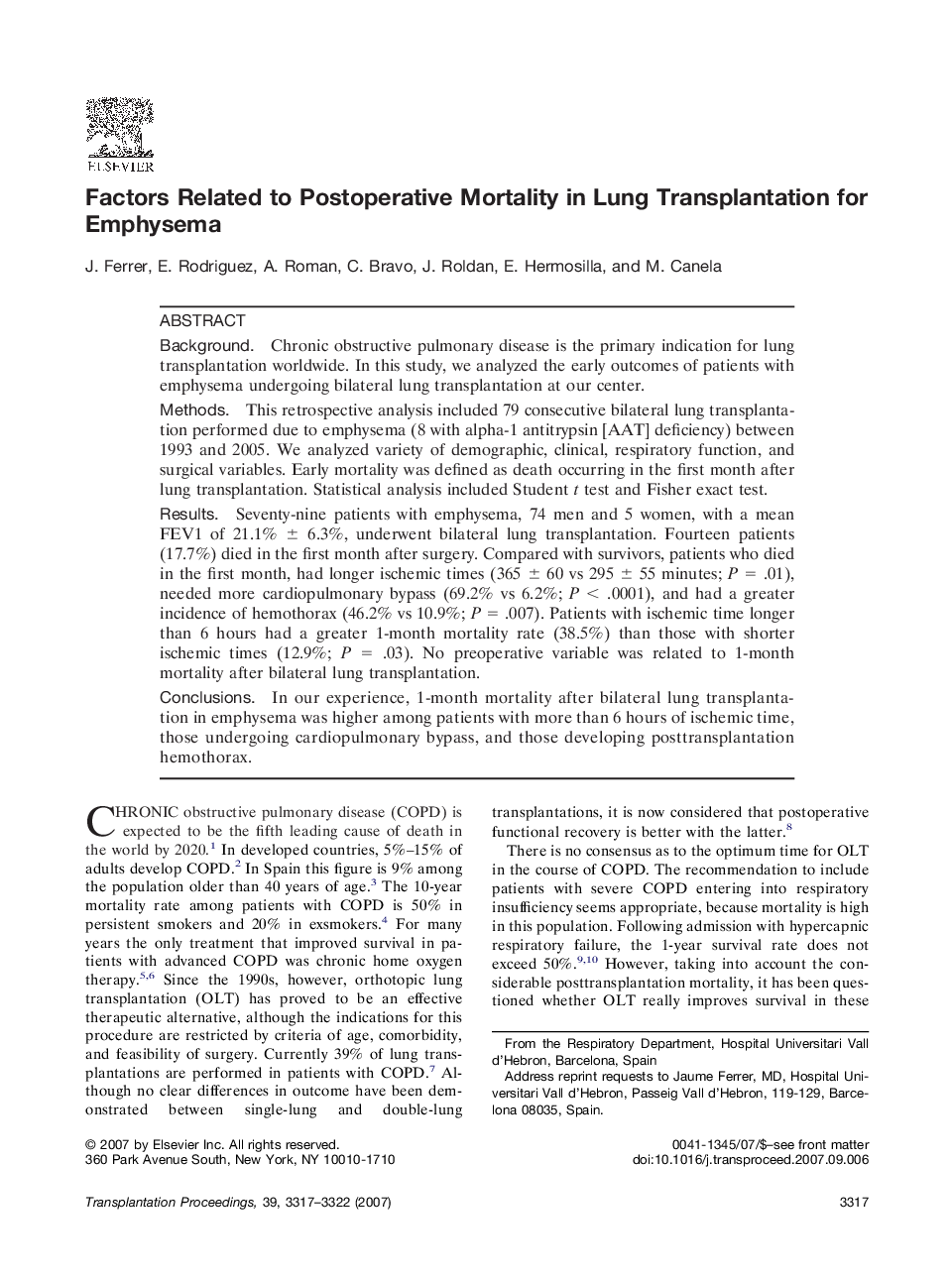| Article ID | Journal | Published Year | Pages | File Type |
|---|---|---|---|---|
| 4262781 | Transplantation Proceedings | 2007 | 6 Pages |
BackgroundChronic obstructive pulmonary disease is the primary indication for lung transplantation worldwide. In this study, we analyzed the early outcomes of patients with emphysema undergoing bilateral lung transplantation at our center.MethodsThis retrospective analysis included 79 consecutive bilateral lung transplantation performed due to emphysema (8 with alpha-1 antitrypsin [AAT] deficiency) between 1993 and 2005. We analyzed variety of demographic, clinical, respiratory function, and surgical variables. Early mortality was defined as death occurring in the first month after lung transplantation. Statistical analysis included Student t test and Fisher exact test.ResultsSeventy-nine patients with emphysema, 74 men and 5 women, with a mean FEV1 of 21.1% ± 6.3%, underwent bilateral lung transplantation. Fourteen patients (17.7%) died in the first month after surgery. Compared with survivors, patients who died in the first month, had longer ischemic times (365 ± 60 vs 295 ± 55 minutes; P = .01), needed more cardiopulmonary bypass (69.2% vs 6.2%; P < .0001), and had a greater incidence of hemothorax (46.2% vs 10.9%; P = .007). Patients with ischemic time longer than 6 hours had a greater 1-month mortality rate (38.5%) than those with shorter ischemic times (12.9%; P = .03). No preoperative variable was related to 1-month mortality after bilateral lung transplantation.ConclusionsIn our experience, 1-month mortality after bilateral lung transplantation in emphysema was higher among patients with more than 6 hours of ischemic time, those undergoing cardiopulmonary bypass, and those developing posttransplantation hemothorax.
